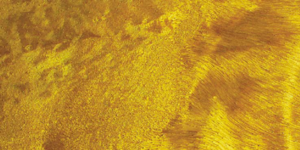The first time I delivered “Trends in Decorative Concrete” was at the Concrete Decor Show in Fort Worth, Texas, in February 2014. It was initially created to present a quick snapshot of what was trending in our industry, targeting primarily the design community. At the time, I never anticipated the presentation would grow into the program it is today.
Over the years the presentation has been updated and expanded to include market information from installers, designers and manufacturers from around the world. In 2018, it become the first of its kind American Institute of Architects Continuing Education Accredited member benefit program, offered through the American Society of Concrete Contractors’ Decorative Concrete Council.
I was honored to present the updated program at the 2019 Concrete Decor Show in Arlington, Texas, in October.
History of the industry
The presentation starts with a brief history of the decorative industry as it grew from colored concrete, early stamping and knockdown overlays in the ’60s and ’70s to its current pallet of products and systems. I introduce early pioneers such as Lynne Scofield, Frank Davis, Joe Nasvik and Brad Bowman, highlighting their achievements and contributions to the industry.
Interestingly enough, most of these early pioneers had no idea the impact or magnitude their respective businesses would have, and how 50 years later their legacies would live on in our industry.
Trends and standards
What is a trend, especially when it comes to the decorative industry? The program touches on how trends in decorative concrete start. It also explores where they come from. Additionally, it touches on how the internet and social media have “flattened the world” in regard to how new ideas “go viral” to become the next hot product, color or finish.
In their most basic form, trends come from quality and creative work being replicated. The time-tested adage, “Imitation is the highest form of flattery,” holds true. This point is really what makes decorative concrete stand apart from other trades.
A contractor pushes the envelope, using a product or system in a new way, or a way it was never intended, and it results in a new finish, color or process. A trend is born.
It’s important to remember that trends aren’t all encompassing and universal. There are colors, finishes and processes that have been popular for 25 years, and will remain so for as long as decorative concrete is a thing. These are standards, and the industry requires we build everything on this as a foundation.
We can’t have trends if we don’t first have standards.

Macro vs. micro trends
Macro-trends are those concepts that weave themselves through all applications. Current macro-trends in decorative concrete include large contemporary patterns and designs, customization of work and natural finishes.
We can see these concepts in stamped concrete, where installers use stamp tools that are 20 years old. However, when you combine multiple patterns, customize colors, and expand banding and edging detail to provide a finished product that is unique and “custom.”
Another macro-trend popular today involves large and contemporary designs. You only need to compare pictures of decorative concrete 10 years ago today’s decorative concrete to see this firsthand. Large contemporary layouts are replacing the tight, intricate designs. This trend is following other flooring markets and we see in both tile and terrazzo designs.
Micro-trends are those processes, colors or finishes that are popular within each product segment. Cast-in-place concrete is all about natural finishes through surface exposure or low-gloss sealers and coatings. Combining materials — such as glass, colored aggregates, wood and metal in or around concrete — has become a micro-trend in this market segment. We see the same trend regarding sealers, where penetrating and low-gloss finishes produce a “natural look.”
Trends aren’t forever. Historically, three to five years is the length of time a trending finish in decorative concrete remains popular. Good examples of this are wood plank textures. They have been popular for about four years now and, based on market response, the trend is reaching maturity.
By all indications, wood plank and wood texture will remain popular for another few years. However, the market is reaching saturation. That usually signals product fatigue and the beginning of the end for a trending process or finish.
Looking to the future
While no one can predict the future, there are some early indicators of future trends in the decorative industry. One of the biggest involves green building and how products, systems and decorative installations will impact the environment.

We see a push for sustainability, low VOC-emitting materials and reduced environmental impact. An increase in water-based sealers and the recent elimination of methylene chloride in retail paint and coating strippers are good examples.
One can make a case that polished concrete was the first decorative system with a reduced environmental impact. From what we see, it was first of what will be an industry-wide trend in the coming years.
If the last 30 years are any indication, the decorative concrete industry has a bright future ahead. Both innovation and quality in the industry is creating new trends in all markets and all corners of the globe.

















